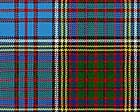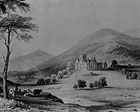 |
||
 |
||
Anderson ClanStand Sure |
||||||
|
Clan Anderson information
|
||||||
 |
 |
 |
||||
|
Clan crest badge
|
Candacraig
|
Anderson tartan
|
Clan Location
|
|||
Clan HistoryThe name Anderson likewise Andrew and MacAndrew were associated in a lot of cases with the patron saint of Scotland St. Andrew and this puts a lot of red herrings in the task of pinning down an exact trail of Clan Anderson. Clan Anderson is a Clan with some Armigers ( individual Andersons entitled to bear Heraldic Arms ) as members making it an Armigerous Clan. However it does not at present have a Chief of the Clan as recognised by the Court of The Lord Lyon King of Arms. Thus making it an Armigerous Clan without a Chief. The Clan, as a single entity in a single location does not seem to be the case. There could be any number of reasons for this and probably the main one being with the origin of the name whereby it could appear at different locations and each "son - or follower - of Andrew" having no knowledge of the others existence. Other reasons for the spread, could also be in the area the main family lived, not being fertile enough to sustain offsprings, resulting in son's setting out with their families for pastures new. Area clearances by landlords would not help either. Historically there are other names have had strong connections but they have since gone their separate ways: Charles Anderson of Ardbrake and Westerton. Whose family lived up by Keith in Banffshire and owned the Westerton Estates in the 1600's. A little tragic epitaph at Botriphnie church reads, "Here beneath lie the ashes of ANN GORDON and KATHARINE LESLIE, the beloved wives of John and James Anderson of Ardbrake, together with those of children of each ; the latter succumbed to fate, 9th March 1667, aged 39, and the former closed her eyes, 19th Nov 1670, when a matron of ..... years, to whose honour and lasting reputation, for they were of distinguished birth, and adorned with eminent virtues, John and James Anderson, father and son, in testimony of their deep affection, and regard for the deceased, caused this monument to be erected over them" Another noteworthy line was the Anderson's of Candacraig. The first Laird of Candacraig was a Patrick Anderson who built his home there in the early 1500's. Over the generations the family thrived and the house grew into a large estate. In 1834, at the height of the clearances, times were tough and some of the family left to seek their fortunes in Quebec Canada. There was also a strong Jacobite following among the Andersons of Rathven and Arradoul in Banffshire. Alexander Anderson of Arradoul was one of the sixteen landowners who surrendered at Banff in 1716 following the Banffshire uprisings in 1715. A William Anderson, married Marjorie Gilzean and joined up to a Hanoverian Regiment in Elgin in 1746. The regiment moved south and was posted abroad on duty. In 1748 an exhausted Marjorie arrived back in Elgin with child, after a journey of hundreds of miles on foot, William was killed in action. Marjorie, whose parents had died, had to live rough and rely on the pity of the locals. In 1760 the young Andrew, by now a teenager, was running an errand for a soldier about to leave for India. Andrew tagged along. William Anderson of Waverley David Anderson of Westland Donald Anderson of Kinneddar Alexander Anderson of Montrave
|
||||||


